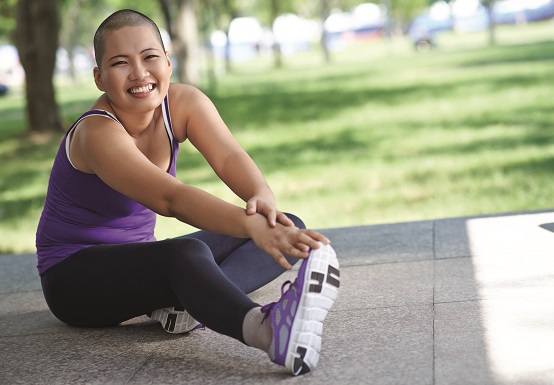Skin Deep

According to the Ministry of Health, skin cancer is the sixth most common type of cancer among both men and women in Singapore. Although it is not ranked high among cancers in terms of mortality, it warrants some attention and preventive care.
THE SKIN YOU’RE IN
The skin is your body’s largest organ. It’s both a waterproof wrapper and a protective covering. However, even the softest and dewiest skins can turn flaky in colder climates, and short of wrapping ourselves in cotton wool, we all suffer minor cuts, scrapes and bruises from time to time. The wonderful news is that skin cells rejuvenate and wounds heal quickly, leaving behind only scars which are likely to fade over time.
While these superficial skin conditions can be detected and remedied quite easily, skin cancer is less immediately obvious and can be much more difficult to treat.
NOT ALL SKIN CANCERS ARE CREATED EQUAL
There are many different types of skin cancers but they can be broadly divided into two groups – melanoma and non-melanoma skin cancers, explained Dr Colin Theng, Medical Director and Consultant Dermatologist from The Skin Specialists & Laser Clinic.
“Melanoma is a mole cancer. This is the most serious and dreaded form of skin cancer as late detection can lead to an increased risk of spreading or metastasis, which can be fatal. Melanoma usually presents as a mole that is changing and increasing in size. The colour may be uneven (different shades), the edge may be irregular and it may also bleed,” he explained.
Non-melanoma skin cancers on the other hand, start in the cells of the skin. The most common forms are basal cell carcinoma (BCC) and squamous cell carcinoma (SCC).
BCC is a slow-growing skin lump on the outermost layer of the skin. It can heal and recur, sometimes accompanied by bleeding that forms a sore. Fortunately, the risk of spreading is rare with BCCs. It may grow for many years undetected, as the pigmented BCC may be mistaken for a mole.
SCC also presents with a persistent skin growth, which is gradually enlarging. It may have an overlying thick scaly crust, with bleeding that later forms a sore. Unlike BCC, SCC can metastasise, or spread, and can be fatal. The risk of a SCC spreading, however, is much lower than that of a melanoma.
CAUSES AND TREATMENTS
The most common cause of skin cancer is exposure to the sun’s ultraviolet (UV) rays. While Asians are genetically ‘designed’ for the sun, they are not spared from the damage caused by the UV radiation from the sun or tanning beds.
“Other common risk factors for skin cancer include exposure to certain chemicals such as arsenic, previous radiation therapy or radiotherapy. People on immunosuppressive medications are also prone to the disease,” Dr Theng added.
If the skin cancer is confined to the skin only, with no evidence of having spread, removal of the cancer-affected area with adequate margin is usually the main treatment, according to Dr Theng.
“In melanoma, when the cancer has spread to other parts of the body, adjuvant chemotherapy or immunotherapy will be required,” he advised. Adjuvant is applied before treatment or surgery.
Other treatments like cryotherapy, topical imiquimod, photodynamic therapy and radiation therapy can be used for early cases of BCC and early forms of SCC.
“Malignant melanoma cases that have been diagnosed early have over 98 percent 5-year survival rates, but if it has spread to the lymph nodes and other parts of the body, the 5-year survival is 18 percent. Hence early detection and treatment are of vital importance,” advised Dr Theng.
Skin cancer screening is usually not included in health screening packages. “However, you can visit a dermatologist for mole checks and skin cancer screening. Often, an examination using a dermatoscope will be performed during the screening to detect melanoma and skin cancers,” he added.
SUN PROTECTION
Dr Theng always advises his patients to stay away from the sun and use sun protection, not only to reduce their risk of skin cancer, but also skin ageing. Minimising sun exposure will reduce the risk of developing pigmentation, wrinkles and dry skin.
According to Dr Theng, we need to heed the ‘BCS’ of sun protection:
- Behaviour
Avoid direct exposure to the sun; seek shade; avoid the sun from 10am to 4pm when the UV rays are most intense.
- C Clothing
Wear broad-rimmed hats; wear long sleeves and pants; preferably wear clothes with a high UPF (Ultraviolet Protection Factor).
- S Sunscreen
Use a broad spectrum sunscreen (that protects against both UVA and UVB rays). Apply it on on sun-exposed areas of the skin and reapply regularly, especially after a swim or vigorous exercise.
So stay sun-smart and look after the skin you’re in. After all, your skin is constantly protecting you. When you take care of your skin, you’re helping your skin take care of you.
Article contributed by Dr Colin Theng, an accredited doctor at Mount Alvernia Hospital.
This article is taken from our My Alvernia Magazine Issue #33. Click here to read the issue on our website or on Magzter.



